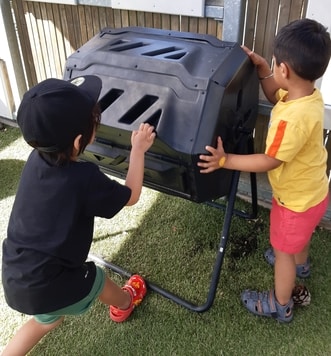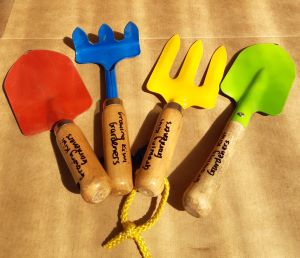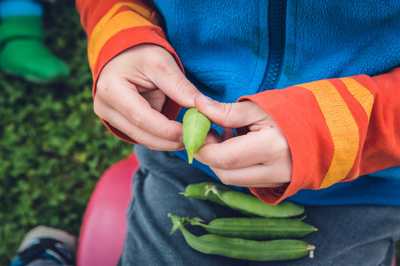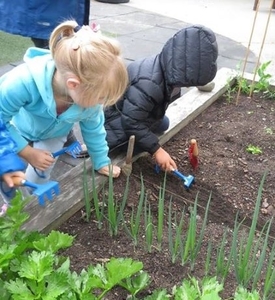I am a fan of early childhood centres making their own compost. What better way to cut down on your waste and carbon footprint, than composting your food and garden waste?
And even better, children learn the cycle of nutrients that comes from the decomposition of waste to release goodness back into the soil.
Every plant that grows in our garden sucks nutrients out of the soil. Overtime the soil becomes depleted of nutrients if we don’t feed it, and our plants won’t grow strong and healthy. Compost helps to replenish the nutrient levels in the soil.
Child-sized gardening tools that are used only for gardening is something I feel strongly about
Why?
-
Having gardening tools that are kept separately from other tools, such as sandpit tools, and are only used for gardening shows children that digging in the garden has a different purpose to digging in the sandpit.
- Gardening is for growing things – namely food and flowers.Having tools that children recognise as gardening tools helps them to respect the garden as they learn that they can only dig in the garden when those tools available.
We all know that we need encourage children to get outdoors and into the natural world to benefit their health and well-being. As we are born with an innate connection to nature, it makes sense that time in nature calms us and makes us feel good. However, experiences in nature also offer lots of learning opportunities for young children, as it gives them instant responses through all of their senses as they touch, taste, smell, see and hear what is going on around them. Furthermore, such connections tend to foster an ethic of care for the natural environment and the life systems within it, ensuring the future well-being of the planet.
Often when we hear the word sustainability we think ‘caring for the environment’, reduce, reuse, recycle, gardening etc. However, education for sustainability is more than just looking after the environment. It includes three pillars as set out by the United Nations in 1992 – the Social pillar (includes social and cultural apsects), the Environmental pillar and the Economic pillar (includes political ideologies). These three pillars combine together to become sustainability. Education for sustainability is teaching how these three pillars interact and combine to “to meet the needs of the present without compromising the ability of future generations to meet their own needs” (World Commission on Environment and Development, 1987, chap 2, para.1).
Gardening provides a model for keeping the pillars of sustainability balanced.
Privacy Policy




